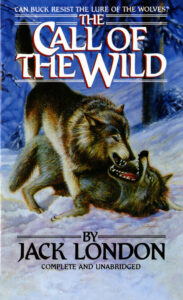There’s something unique and oddly compelling about the first several chapters of your typical LitRPG. Unique, compelling, and…isolated.
I’ve been thinking about story intros lately. Y’know, the middle of a story can potentially be long, bumpy, and diverse, but you only get one intro, so it better be good. And another thing I realized—either that, or it’s surfacing from an ocean of random writing advice—is that intros provide a unique opportunity for vast coincidences. That is to say, if your story is going to have a one-in-a-million, wildly unlikely plot-critical event, generally speaking, it had better happen at the beginning, not the end. Childhood friends who meet by coincidence in the conclusion make people angry, but if they meet in Chapter One, we’re more likely to bask in the wonder and go, “Hm, yes, coincidences do happen in real life, don’t they?”
In your typical story, events later on have to be built up to. Your intro is not built up to, not by anything except for genre conventions, and that in itself presents a huge array of opportunities.
LitRPG Intros are…Profoundly Lonely?
Plot: a person wakes up in another world, from which they can never return. It looks just like their favorite VRMMO. Wait, no—it’s a totally unrelated fantasy world. Or maybe it is still planet Earth, only ravaged by a sudden apocalypse.
Oftentimes they don’t get “isekai’d” or newly devastated at all. They’re in the same old world, only a new powerset comes over them, perhaps one that they can share with no one. A time loop. A world-breaking power. A secret to conceal.
Those two paragraphs don’t describe every LitRPG plot. I bet they don’t even describe a quarter of them. But I sure have seen them around a lot. What these setups have in common is that they are starkly lonely.
As a rule, the person who wakes up is a person, singular. Anything else is a subversion. Isekai’d protagonists appear without their old family, without friends—sometimes right after a near-death or literal death experience. Some protagonists waking up in the apocalypse start off with companions, others do not. Some people with magical secrets begin with a confidante or two, many do not. Even those with friends tend to stand apart, head and shoulders above their peers in terms of knowledge, or power, or morality.
These intros are extremely lonely. And they are the only time we will see their protagonists be so lonely. But readers know that what begins as a void of possibility will be filled out bit by bit with new places and new people.
These intros are also tutorials because one of their chief purposes is to introduce their systems to the readers. A LitRPG’s first several chapters can have its protagonist do many things, often including…
- Learning their powers.
- Choosing their powers.
- Entering survival mode. In a story all about powering up, the intro is logically when our lead is the weakest they’ll ever be.
- Entering easy mode. In a game of progressing difficulty, the intro is logically when our villains are the weakest they’ll ever be.
- Adapting to the new or changed world which will be the setting for the rest of the story. After all, usually the intro doubles as the dawn of a new and intimidating age.
The first arcs of LitRPGs tend to get a lot of mileage out of long, slow intros. Cynically speaking, yes, this does mean more profits because of more pages read. But if there weren’t engaging things happening on those pages (or at least a cool twist now and then), all that length would go unread.
There may be no better way to acclimate a reader to a story’s gamelike mechanics than by nearly isolating those mechanics, letting them take center stage during the only stage of the story when they can do that—when there are no competing character or world arcs besides the struggles of a single lead.
And when the stakes are low, a LitRPG intro that’s really inventive can use this time to play with mechanics, too. This is the ideal place for mini-arcs about chasing low-level fodder, for testing a character’s powerset before it gets too functional and user-friendly for many to pose a threat.
But what, besides gamelike elements, makes these kinds of LitRPG intros unique in my eyes, separates them from other books? I think it’s the fact that the loneliest LitRPG intros are not about interpersonal conflict. There is hardly any. What would’ve been a driving force for the plot of many a fantasy adventure novel is sometimes just…absent!
Instead, we have heroes vs. worlds, circumstances, and nonverbal monsters.
A Cozy Case Study: Cinnamon Bun

I wasn’t expecting to like the intro of RavensDagger’s Cinnamon Bun nearly as much as I did. After the softest and least grisly instance of isekai-ing I’ve ever seen, a girl named Broccoli Bunch appears in a fantasy world. It’s gentle enough that what would ordinarily be a disturbing setting is made into a place of quiet curiosity. Devoid of people, populated by skeletons and ghosts, the town Broccoli finds herself in is still spiced up with laughs and her own cheerful, bumbling self.
It’s an intriguingly empty intro, and also very much a tutorial for Broccoli’s budding powers. She must not only fight off low-level monsters, but also clean the dust-choked homes, finding clues to what happened here—and where she even is—along the way. Her glimpses of the wider world are tantalizing and a little breathtaking. Since this is an intro and the world will not always be small, these glimpses will never be so breathtaking again.
Clearly the focus isn’t on how our character interacts with other characters. It’s not even about how she struggles against her own psychology, except in that she problem-solves. It’s not about her coming to grips with the loss of her family, or investing her hopes and dreams in friends to come. The focus is on how she interacts with the system, which, for the sake of her progression, requires her to interact with the world. System-change leads to world-change—not the other way around. She wouldn’t be cleaning this inn if she didn’t have a system.
The interpersonal arcs we might expect to see in a conventional, off-the-shelf fantasy novel aren’t present here. Not yet, at least. Is watching Broccoli sweep and chat with silent skeletons a compelling enough motor to drive our story? …I dunno, is it? That’s a serious question. The answer will vary depending on who you ask. LitRPG fans tend to say yes, as the massive popularity of the story attests to. But I think most SF readers, including people outside of the niche, would say no. I mean, she’s just playing around, solving the small puzzle that is this town.
But it’s fun, dammit! And the emptiness gives room for speculation even beyond the typical world of mystery. Broccoli hasn’t been raised in this world, so she’s never heard a single rumor of the place she now inhabits, and there is no one alive to tell her. We can even speculate on what species live here—a question most fantasy stories answer in about one page.
And also, like…gamified stories are fun. Gamified stories with low stakes can be quite relaxing. The experience of reading this produced absolutely no stress in me. That was because there was low suspense, which we typically see as a flaw. But some might call it a feature. And I won’t even argue either way.
A Gritty Case Study: Survival Action Stories

I’m gonna be honest, I can’t remember the last moody survivalist LitRPG I’ve read that wasn’t also for work (I line-edit them). Since I try not to publicly review any stories I’ve edited or proofread for money, I’m going to diverge a little. So here is a summary of a generic story I will call He Who Punches Bats.
Alright, so in the smash-hit story He Who Punches Bats, a programmer named Ryan is killed in a car accident and/or nearly killed in the apocalypse. He wakes up face-down in a puddle of bog water at the bottom of a cave. He doesn’t know it, but this is actually the lowest floor of a cavernous dungeon complex, and it’s filled with evil bats. Caves seem to be a prime location for LitRPG intros, the inhospitable, alien darkness lending itself to tension and horror. They’re also contained, claustrophobic spaces.
Ryan wakes up. He’s weak, he’s trembling. He gets a system, and the system tells him to do squats. So he does squats, which raises his Defense stat, but it’s not enough. A bat fights him, he gets his ass handed to him. Ryan is on the verge of death, bleeding absolutely everywhere, and plus, he’s hungry. Another system message: he’s gonna have to do pushups too. In Chapter 4, he finally realizes that punching bats will give his Attack stat a big, juicy multiplier. Now he’s cooking.
So Ryan spends the next twenty chapters grinding against different varieties of monster bats, all with special skills that liven up the action. He moves Metroidvania-style from room to room in this cavern complex, picking up strange items along the way. His muscles grow prodigiously.
When he eventually leaves the cave in Chapter 65, it’s with a strange sense of loss and nostalgia. By now, he’s dominated the cave. All his close calls and last-minute strategies have served him well. It’s like he became the king of that small realm and now he’s just a pauper. Blinded by the sunlight of the outside world, he straggles into the nearest village, where everyone thinks he’s a fucking weirdo but agrees that he has nice muscles. End of Book 1.
As any reader of this story will tell you, interpersonal conflict is not the focus here. In fact, Ryan barely thinks back to his old home at all, except in occasional dark moments. But there seems to be a tacit agreement between the readers and the author that we’re mostly just here to see him punch things. It’s in the title, after all. If the author can pull out some compelling drama in his backstory, more power to them, but it will always play second fiddle to the strategy and combat and engaging with the system.
This makes the story pretty weird, right?

Alright, gang, now I’m gonna tell you about a story that actually exists. It’s called Call of the Wild by Jack London, and it’s about a wolf-dog named Buck and his wacky misadventures. By “wacky” I mean he’s subjected to brutal conditions as a sled dog in the blizzard-ravaged Yukon.
Yes, he battles cocky dogs fighting for leadership in the pack and leers at shitty humans, but mostly Buck fights nature, which is also fighting himself—testing his limits. He doesn’t simmer in any psychological hang-ups over the loss of his old life in gentler weather, he simply fights in the here-and-now. The end of this novella, to put it in vague and non-spoilery terms, is victory over nature by succumbing to it. And to awkwardly weld that to LitRPG terms, it’s like winning against the system not by destroying it, but by reaching the level cap and the final upgrade.
You might say that the plot of the novel is how Buck and other living things answer that titular “call of the wild”—the idea that creatures are living more authentically and powerfully when they return to their hunter-ancestors and the conditions they lived in. You could also say that the plot is a bearing-out of that old chestnut “survival of the fittest,” where “fittest” here means basically “biggest dog muscles.”
Strictly speaking, neither of these narratives needs other characters to function. They need obstacles, but not personalities.
And there are countless published works where what you might call “the plot” is secondary to all that stuff at the bottom of Maslow’s hierarchy of needs: food, water, shelter, et cetera.
Hatchet is an award-winning children’s book about a boy trying to get home, apparently, but the reason I picked it up is because he wields a hatchet and fights a bear. (I think? I never finished it back in middle school.) My Side of the Mountain is an award-winning children’s book about a boy whose parents really want him to get home, apparently. I picked it up just to see this guy hanging out in the trees with a bird.
But we can go further. The Wolves of Paris is about wolves. Gay-Neck is about having a gay neck. (I’m kidding, it’s about pigeons.) I did not necessarily pick these up wanting to learn about pigeon love affairs or the conflicts between medieval Parisian hunters trying to kill the wolves. I’m primarily here to see some wolf action, some bird action.
My point is that survival in and of itself can be the plot. LitRPG intros about surviving in a hostile world get so much mileage from the tension that comes from simply striving to live. They know that stories don’t always need social conflicts to work.
Not everyone is into that kind of survival narrative. Often I am.
A YA Case Study: The Rithmatist is :'( too normal waaah :'(

Damn! I almost forgot what YA fiction was like.
I was never the type to cram these stories down, but I have read bits and pieces over the years, from series like The Hunger Games, Red Rising, Maximum Ride, Cirque du Freak…and yes, Harry Potter (eventually). Besides fantastical action, what’s one thing they have in common?
Yes, that’s right…they have heavy and dramatic interpersonal conflict!
If the lead characters in these stories fail, they die or get captured or their older sibling or some guy named Desmond Tiny laughs at them. While they have moments of levity, as a rule, their climactic duels with foes and rivals could end in blood. And there is marked unhappiness in their families, if they even have families. The lack of one leaves a wound.
Why so much conflict? Probably because that’s Effective Dramatic Storytelling 101. If there’s no problems and no stakes, then what are we reading for? Even a cozy murder mystery starts with, like, a murder.
Being YA, these books also tend to have incidents that readers in middle and high school can presumably relate to. Hiding shit from your parents. Dealing with bullies. Failing tests. Feeling ostracized.
And…damn. I forgot how frustrating it can be when a story about that kind of mundane dysfunction doesn’t have enough wacky magic to captivate me.
That’s what I’ve been thinking as I read the opening of The Rithmatist by Brandon Sanderson. People cannot shut up about this guy, and…I dunno, Mistborn is hopefully a good series? But this book here, this ain’t it. Not for me, anyway. What I wanted from the book, I’m getting from a drip feed.
Joel lives in a world of chalk-wielding magicians, but unlike them, he is not a Rithmatist. And while that is in many ways a cool take on the magic-academy setting (think the detective work and espionage side of Harry Potter, but with a total muggle being actively locked out of the world’s secrets), it also means that most of the cool things that happen in the story happen to other people. They’re offscreen. They’re hearsay. It almost feels like I’m reading a very, very long intro, one determined to keep me from seeing the big chalk battlefront for as long as possible.
What we’re left with onscreen is heavy dramatic interpersonal conflict about hiding shit from your parents, dealing with bullies (…okay, moreso dealing with teachers who are bullies—Snapes), failing tests, and feeling ostracized.
Damn! I didn’t come here just to be reminded of how much my own high school life could suck! I didn’t come here to relate to Joel on having cheap school lunches or whatever, I came here to see people fighting with chalk!
I know exactly how simplistic my complaints sound—especially now that I’m halfway through the book and at long last, that sidekick girl is feeling a little more real, a little more compelling. But on the other hand…no! No, I’m not being too simplistic about this! I’m being just simplistic enough! I made certain assumptions when I picked up this book, had certain expectations, and what I got instead was not a pleasant enough surprise to coax a five-star review out of me. That doesn’t mean the book is not good, but it does mean it let me down, and the negative emotions made me feel bad.
I made a contract with this book. The contract stipulated that while interpersonal conflict is cool and all, I am mostly just here for the chalk-fighting antics. But I’ve seen one real fight and two half-fight training sessions, in between lots of teenage antics. It’s just not the same.
The Rithmatist, like LitRPGs, does gamify its powers more than the average fantasy novel. There are detailed layouts of magic chalk and weighings of the pros and cons of different dueling strategies. Characters discuss them, sometimes at length. But Joel’s not that lonely. He goes to school, and school is a sea of responsibilities and connections that most LitRPGs don’t burden themselves with.
Many people turn to YA as their wellspring of comfort reading, but…I’m not that comforted by narratives about, say, overcoming bullying, simply because I hate reading the part where there is bullying. Heck, I suspect that YA books actively try to address that. The Insiders by Mark Oshiro, for instance, surrounds the narrative throughlines of bullying and loneliness with a magical space-transcending clubroom and pretty cozy bonding with family and friends, and I think part of the reason is to give readers a softer place to fall in the middle of these tough subjects. If there weren’t so much action in The Hunger Games, it would’ve just been bullies and tyrants staring angrily at Katniss so hard I would’ve dropped it like a hot potato.
But you cannot get much more comforting than Cinnamon Bun with its friendly ditz who would gladly hug a skeleton monster.
People also turn to YA for thrilling action. But you cannot get much more nail-biting than a narrative that literally revolves around action, nothing but the action and the ways to navigate that action.
You Only Get One Intro. Make it Count.
This kinda-disjointed article has hopefully given you food for thought in the wonderful land of Intros. They’re not just a hurdle to get out of the way, they are formative. They can even be a chance to cut loose before the heart of the story begins. And in LitRPGs, they are wonderful teachers.
…And Now to Transition to My Own Story

To avoid tooting my own horn, I’m going to talk as objectively as I can about Catgirl System’s intro and what went through my head while I wrote it.
When I started planning this story out, Cinnamon Bun was a major inspiration (surprising no one). I wanted it to have a generally comforting, small-stakes, small-scale intro. Smallness is important enough that I included frequent drawings of small maps of the small world (maps in stories and games tend to make me feel cozy).
But I also took inspiration from wilderness survival stories. If I remember correctly, I had just read Raptor Red around the time I started planning the story. That book is wild. It’s like the best possible version of a dinosaur documentary in book form, and somehow involves believable dino-characters with depth. While I couldn’t even begin to write that kind of narrative without developing encyclopedic knowledge of all living things (so in Catgirl, I didn’t try), I did go, “Hm, so survival really is cool to read about sometimes.”
In short, I wanted to incorporate aspects of both a comfortable tutorial and a really-truly-scary one.
Also, I wanted the intro to kiiinda-sorta stretch on forever, because I liked the idea of having the main character feel like a loner for many chapters, and I wanted the world to be a near-total mystery for many chapters. Build that suspense!!
I didn’t swear off all interpersonal conflicts—in fact, I made them central. But not for any spicy reasons. The first reason is because I just like sassy smartass systems that their users wish would shut up. The second is to keep the narrative going after the “tutorial” is over. All the same, these chaotic relationships are still the B-plot running in the background while Taipha the nekomata messes around fighting woodland creatures.
Since I swore to provide a writing update every two weeks until I finish Catgirl System, here is my update: positive! I’m 99.99999% done writing Book 2! Now I just need to fix about five small pernicious mistakes, and two that I left further back in Book 1 (weird how those keep cropping up).
Then I’ll return to that most wonderful stage of the process: setting up all those blue boxes.
Actually, it won’t be that bad this time. Or…shouldn’t be. Because now I have a personal pipeline! Also, I know of other activities I can do while I use that pipeline. I can, for example, rewatch-halfwatch videos I’ve already seen and thus don’t feel obligated to pay full attention to. I can listen to music. I can endure silence. I can listen to the slowly-slowing beat of my own heart.
…Okay but check this out

I keep not drawing the cat-protagonist as a cat. And that’s a crime.
I drew more character pics in the same style, but only the Patreon Gang and maybe people who buy the eventual print books get to see it…B)
But hey, all, thanks for reading! I’ve written a bunch of other stuff about writing, including losing (and regaining) creative drive. I’ve also written about this weird Dolly Parton Christmas movie (?) and disturbing kids’ shows (???).
